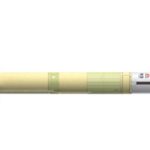The Defence Secretary has set out the future vision for the UK Armed Forces ensuring the military is prepared for new and emerging threats and challenges.
The Integrated Review ‘Defence in competitive age’ addresses the challenges and opportunities the UK faces in a more competitive world, where new adversaries could use a number of tools at their disposal to redefine the international order. It also seeks to examine how the UK uses its capabilities to respond to these threats across land, sea, air, space and cyber domains.
Defence will spend more than £85-billion on equipment over the next four years enabling the UK’s armed forces to adapt, compete effectively, and fight decisively when needed. This measure will support 400,000 jobs across all four nations of the UK.
UK air capabilities will bolstered with an injection of over £2-billion in the Future Combat Air System which will deliver a pioneering mix of crewed, uncrewed and autonomous platforms including swarming drones and the ultra-modern Tempest fighter jet. This programme has already created over 1,800 highly-skilled jobs in over 300 companies across the UK. The Typhoon fleet will be upgraded with a suite of new weapons and state-of-the-art radar.
£66 billion to be invested in research and development
A total of £6.6-billion will be invested into research and development projects, helping to provide a strategic advantage with improved capabilities. A £60-million programme undertaken over the next four years will develop novel weapons, artificial intelligence, synthetic/digital systems and space-based capabilities. Further to this, £500-million will be invested in capabilities to enable our forces to respond in a growingly contested electromagnetic environment.
Space is fundamental to military operations with an investment of £5-billion over the next decade in the Skynet 6 satellite communication programme. This will be complimented by £1.4-billion allocated to the new Space Command, National Space Operations Centre, Space Academy and a UK-built Intelligence, Surveillance and Reconnaissance satellite constellation. Space Command will officially launch on 1 April 2021.
“Threat-focused, modernised and financially sustainable”
Defence Secretary, Ben Wallace said: “This Defence Command Paper ensures our armed forces are threat-focused, modernised and financially sustainable. Our military will be ready to confront future challenges, seize new opportunities for Global Britain and lay the foundations of a more secure and prosperous Union.”
“We will continue to work with allied partners to address future global security threats whilst also enhancing critical outputs in the battlespace domains. Our people and their expertise are at the heart of what we do and further investments into training, welfare and support facilities will be reflective of this and ensure our armed forces are well equipped to face tomorrow’s threats today.”
Report brings “welcome clarity” – ADS
Responding to the publication of Defence in a Competitive Age, ADS Chief Executive Paul Everitt said: “Today’s Defence Command Paper provides industry with welcome clarity on future programmes and priorities.”
“Industry wants to work closely with the MOD and front line commands to manage the modernisation; investing in innovation, technology and know-how to ensure our national security and maximise the economic impact across all regions and nations of the UK.”
“ADS is keen to see further detail of the planned Defence and Security Industrial Strategy, working in partnership with the Government to deliver on further industrial capability for our Armed Forces in support of the UK’s national security.”
Vision and funding will give sector “confidence to invest” – Woodburn
Charles Woodburn, Chief Executive of BAE Systems, also welcomed the “clarity” of the Ministry of Defence’s “vision of a modernised, integrated force provided to industry and the increased funding that will give our sector the confidence to invest in the cutting edge technologies that will support thousands of highly skilled jobs across the country.” He added: “Working with our customers, partners and suppliers through programmes like Tempest we’re demonstrating a radically different approach to achieve pace, affordability and operational capability to meet evolving requirements more quickly and at a lower cost.”
Chief of the Defence Staff, General Sir Nick Carter added: “For the first time that I can remember we have an alignment of the ends, ways and means to modernise and transform the posture of our nation’s armed forces to meet the threats of a more uncertain and dangerous world.”
Prime Minister Boris Johnson published the Integrated Review last week which confirmed the new Integrated Operating Concept which was published in September. A significant multi-year settlement of £24-billion for defence was confirmed last year, enabling long-term planning and delivery of the Integrated Force Structure for 2030.
Other highlights:
- The British Army will receive an additional £3-billion for new vehicles, long-range rocket systems, air defences, drones, electronic warfare and cyber capabilities with £120-million to create new Ranger Regiments, supporting Special Forces in collective deterrence activity. The Army will introduce a new Warfighting Experimentation Battlegroup drawing on elements from across the entire force designed to fight prototype warfare, focussing on hybrid and conventional threats.
- The Royal Navy will develop a new Multi Role Ocean Surveillance ship to help protect vital underwater maritime infrastructure and protect from maritime threats, aiming to come into service by 2024. The fleet of frigates and destroyers will grow through this decade with shipbuilding investment doubling over the life of this Parliament rising to over £1.7-billion a year. The Royal Marines will also benefit from a £200-million investment over the next ten years to form the Future Command Force, a Commando force that is persistently forward deployed conducting specialist maritime security operations.
- Strategic Command will invest £1.5-billion over the next decade to build and sustain a ‘digital backbone’ to share and exploit vast amounts of data, through the cloud, and across secure networks that are resilient to cyber-attacks from state, proxy and terrorist adversaries.
- Defence is set to invest £1.3-billion into improving Single Living Accommodation (SLA), as part of an accommodation strategy, and £1.4-billion into wraparound childcare giving personnel more childcare options, as part of a revised families strategy.
- The UK will also enhance its global outlook with an investment in overseas training and will add to its Defence Attaché network which supports our integration with allies and overseas partners.

